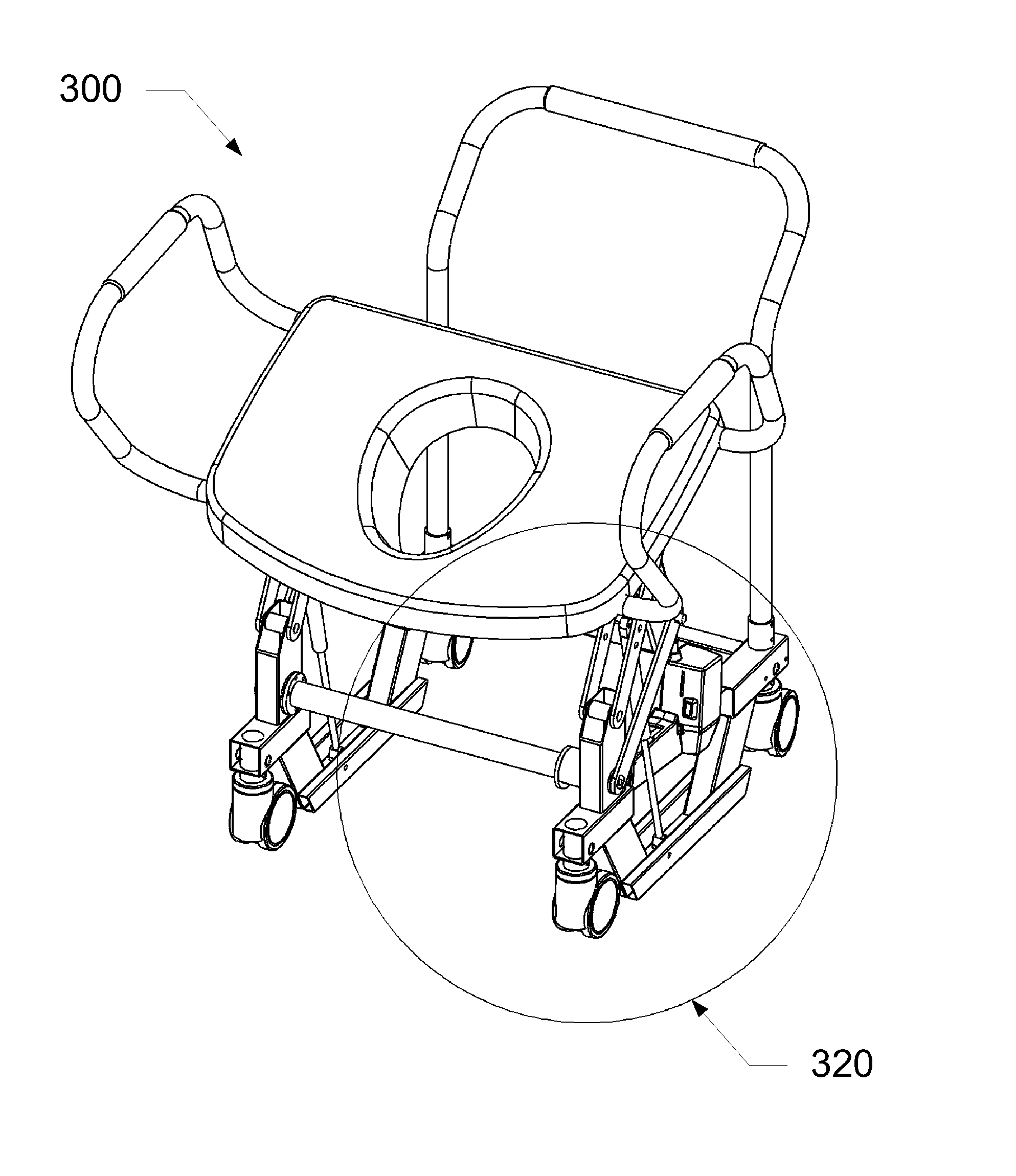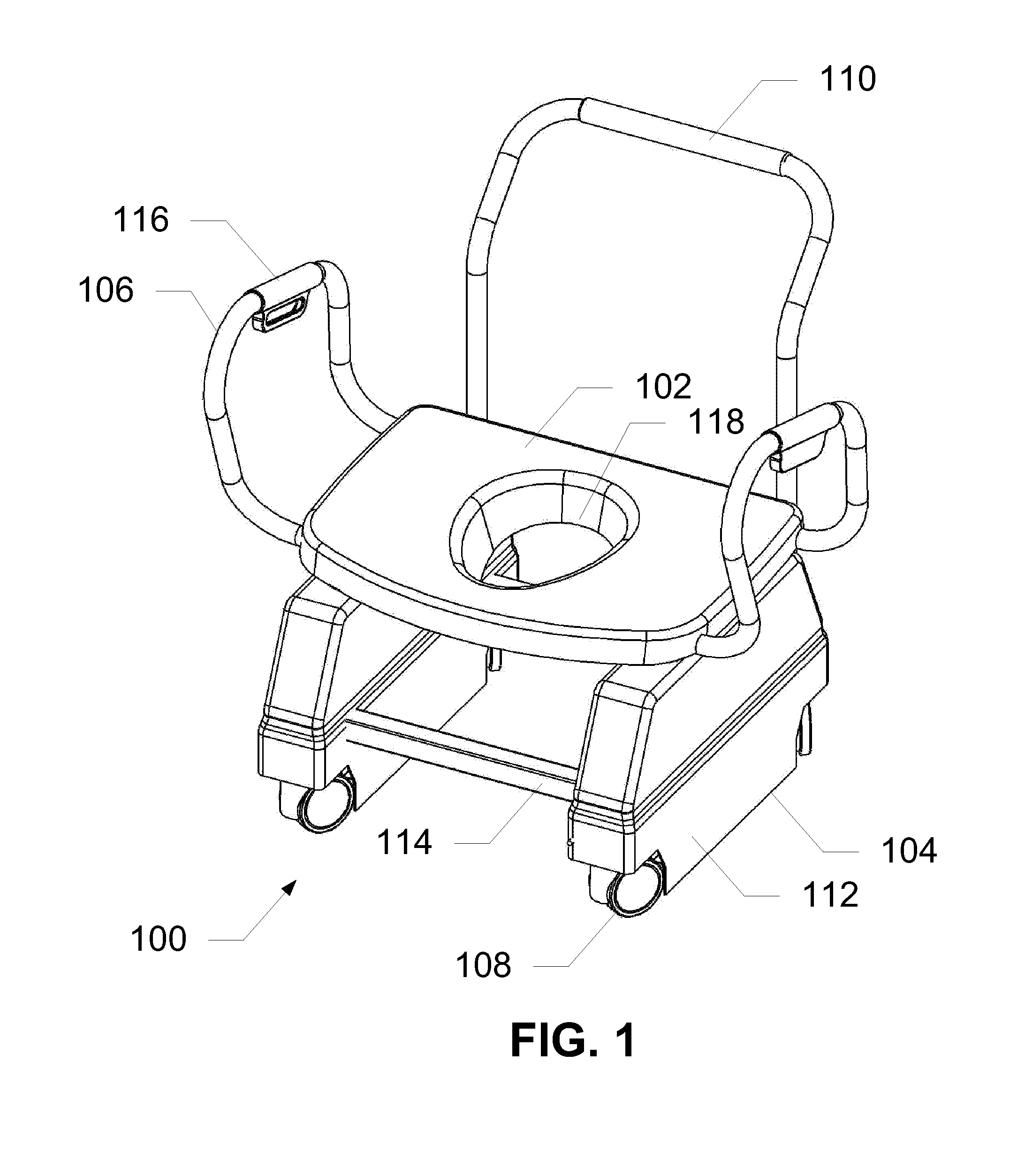Devices and Methods for Lift Assistance
a technology of lifting assistance and devices, applied in the field of lifting techniques, can solve the problems of temporary difficulty after surgery, elderly, disabled, pregnant or the weak may have considerable difficulty standing or sitting, and the routine movement of most people is not so routine for certain classes of peopl
- Summary
- Abstract
- Description
- Claims
- Application Information
AI Technical Summary
Benefits of technology
Problems solved by technology
Method used
Image
Examples
Embodiment Construction
[0032]The present invention presents a novel technique for lifting users from a seated position to a substantially standing position without suffering from some of the drawbacks of conventional devices. A lifting mechanism is coupled between a seat portion and a movable base portion. The lifting mechanism includes a pair of upper and lower linkages pivotally coupled to different points on vertical supports on the base portion and on seat supports on the seat portion. An actuator provides rotational energy to a drive shaft that is fixedly coupled to a front end of at least one of the linkages. As the drive shaft rotates, the linkages move in such a way so as to lift the seat while changing an angle of the seat from a substantially horizontal position (seated) to a relatively angled position (raised). A plurality of compressible springs enables an even balance between the weight of the human and the pressure of the lifting mechanism underneath the seat. Furthermore, the device also in...
PUM
 Login to View More
Login to View More Abstract
Description
Claims
Application Information
 Login to View More
Login to View More - R&D
- Intellectual Property
- Life Sciences
- Materials
- Tech Scout
- Unparalleled Data Quality
- Higher Quality Content
- 60% Fewer Hallucinations
Browse by: Latest US Patents, China's latest patents, Technical Efficacy Thesaurus, Application Domain, Technology Topic, Popular Technical Reports.
© 2025 PatSnap. All rights reserved.Legal|Privacy policy|Modern Slavery Act Transparency Statement|Sitemap|About US| Contact US: help@patsnap.com



